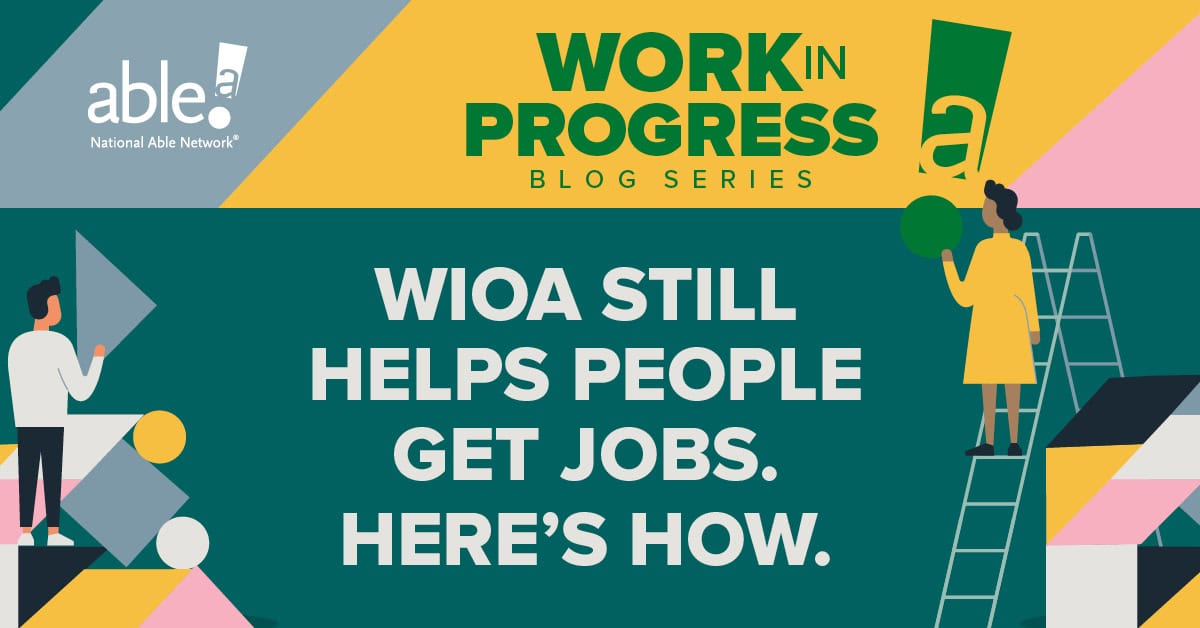A recent article in The Atlantic takes aim at the Workforce Innovation and Opportunity Act (WIOA) and makes the case that WIOA training is ineffective and places workers into dead-end jobs.
In “The Problem with In-Demand Jobs,” author Kevin Carey writes:
Even in the 1990s, at the peak of free-trade fever in Washington, Congress knew that globalization would be rough on some folks. Opening the economy up to cheap imports from Canada, Mexico, and China was bound to undercut domestic industries and cost many American workers their jobs. On top of that, welfare reform eliminated or sharply cut benefits for many families. To soften the blow, Congress offered one of its favorite solutions: federally funded job training to help laid-off workers and destitute parents find a new source of income.
It made sense in theory. Manufacturing workers would “re-skill” for the Information Age economy—perhaps moving from the factory floor to an exciting career in, say, computer science—and impoverished moms would get a hand up instead of a handout. In practice, it was a failure. A 2017 study by Mathematica Research compared people who had received job training under the 1998 law, now known as the Workforce Innovation and Opportunity Act, with a randomly selected control group. Thirty months later, the training had zero effect on earnings.
The article goes on to argue that local WIOA workforce boards are controlled by business interests, do not train individuals for “good jobs,” and that two of the most common employment outcomes for WIOA-trained individuals — CDL-certified truck drivers and CNA nurses — are not actually successful outcomes.
In reality, WIOA operates differently and has a stronger track record than Carey portrays.
Under WIOA, local workforce boards are convened from volunteers of defined community boundaries (usually following the contours of counties) and can include business representatives from the local area. These boards are tasked with determining in-demand industries and sectors they want to target for growth. This information in turn is used to develop training programs, such as the ones run by Able.
To the extent that workforce boards are “dominated by business interests,” they are composed of businesses local to every community and are designed to be responsive to their needs. Rarely if ever is Walmart, for example, contributing to board plans.
Carey’s contention that “what business wants is a steady stream of low-wage workers trained by someone else,” is obviously true, but not in the way he implies.
Many local businesses are small businesses with thin margins and no capacity to train dislocated workers to acquire the basic skills they will need to be employed. But this training can be accomplished through the public workforce system, specifically WIOA.
At Able, for example, dislocated, underemployed, and unemployed workers can participate in WIOA training that prepares them for a host of jobs, including retail, hospitality, information technology, and more. Small businesses, especially in rural areas that have been severely impacted by disinvestment, rely on this system to find the workers they need. And workers rely on this training to find meaningful employment.
Able’s IT Career Lab training program produces outcomes that would surprise Carey, and demonstrates how WIOA funding can be effectively used to place people into sustainable employment. The program has an 87% completion rate and 43% of students who complete the program earn one or more certifications. And the average starting wage for program graduates is $20.50 per hour — well over minimum wage in the areas where IT Career Lab operates.
Carey also takes aim at WIOA’s lack of focus on “good jobs,” which he leaves loosely defined. But the U.S. Department of Labor has begun to emphasize the Good Jobs Initiative, which seeks to train and place people in employment that upholds certain principles. These principles run the gamut from living wages to a respectful work environment. This is a recent development, and like turning a cargo ship, it takes time to be effective. The Good Jobs Initiative is at the forefront of new federal grants, including WIOA.
Lastly, it’s important to also recognize that the public workforce system’s purpose is to help people find employment. With the right training and tools these entry level positions can be cultivated into careers. And in that, WIOA has been successful.

